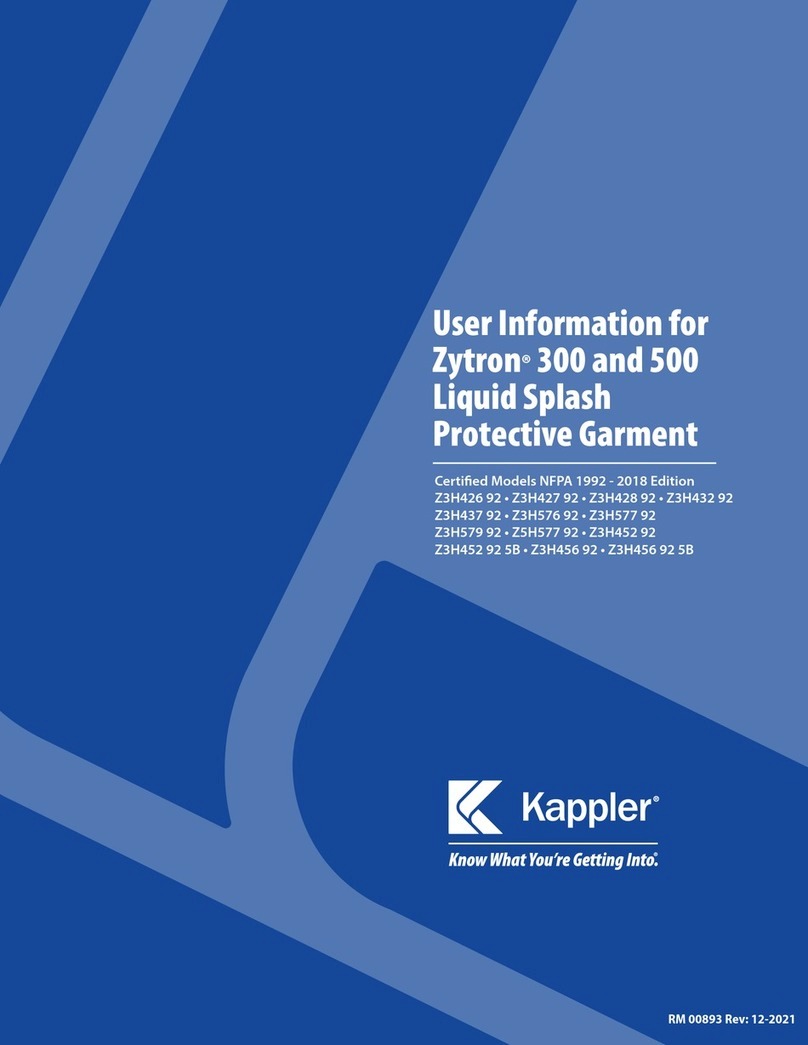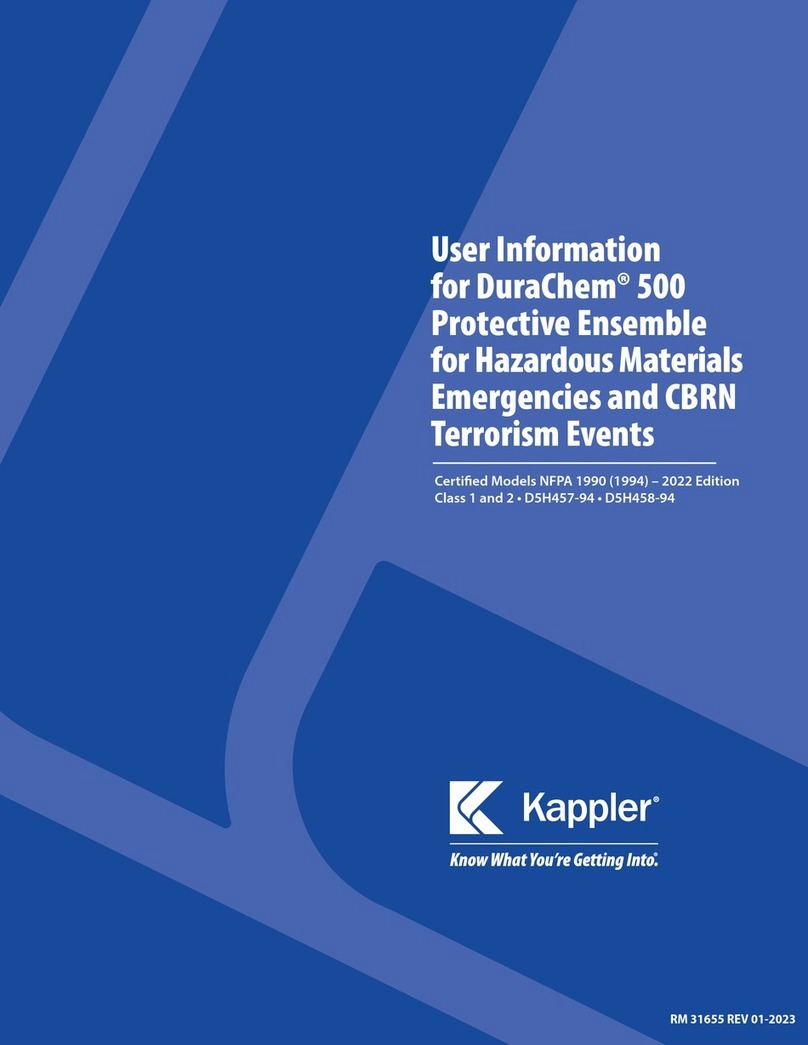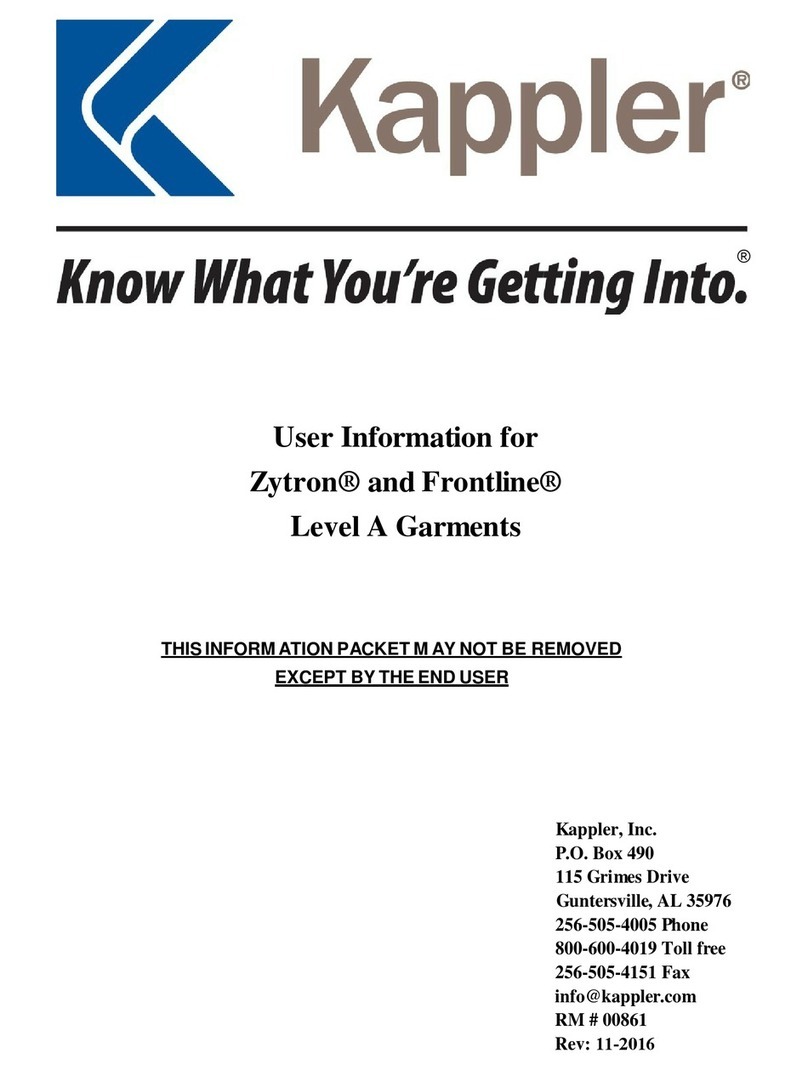
User
Information
for
Zytron®
and
Frontline®
Level
A
and
Garments
~its
for
totally encapsulating garments. Similar information
is
available on the federal OSHA
Lebsite
(www.OSHA.gov).
Chemical Permeation Data
Before using a garment
in
a chemical situation. consult the chemical permeation data appropriate
to the garment material. This information
is
to
be
used as a guide only. The permeation
performance
of
any material depends on a number
of
factors including chemical concentration,
temperature, time and amount
of
exposure, etc. Due to the large number
of
variables,
it
is
impossible for all garment materials to be tested against all chemicals. all combinations or
mixtures, and all temperatures at which the chemical might be encountered.
Chemical permeation tests are performed under laboratot)' conditions
--
not actual workplace
conditions. They address chemical breakthrough characteristics and do not account for physical
perfonnance characteristics that affect barrier such
as
abrasion, flex fatigue. puncture, tear,
oxidative degradation, or degraded performance due to previous contamination.
No single protective material will protect against all chemicals for all situations. The best course
of
action is to test the primary garment materials against the specific chemical hazard, at the
temperature and
in
the concentrations to be encountered. Kappler, Inc. will provide free
swatches
of
primary garment materials for testing and help arrange to have these tests performed.
Static
Electricity
Under certain conditions. such as cold and dry weather, it is possible for garments to build and
discharge static electricity. Discharges are not normally dangerous except in situations where
generation
of
an electrical spark could ignite a flammable atmosphere. When working around
flammable chemicals, steps to eliminate potential static discharges should be used. In these
situations, recommended precautionary steps include the use
of
an over-cover, raising humidity
level
of
the work area, and/or using a commercial. anti-static application.
Avoid Continuous Exposure
This garment should not be immersed
in
chemicals. This garment should not be exposed to
continuous hazardous liquid chemical splash or deluge. Do not wade through liquid pools
of
hazardous chemicals
if
not necessary. Direct chemical exposure to the garment should be as
limited
as
possible.
If
exposed to direct splash or deluge
of
hazardous chemicals, leave the area
immediately and decontaminate.
Supplied Airline Applications
To connect to an external supplied airline system, these garments must be equipped with the
appropriate, NIOSH approved garment pass-through. Note that this pass-through connection
will NOT serve
as
an anchor for a tether. Excess stress on this fitting may result
in
permanent
4































